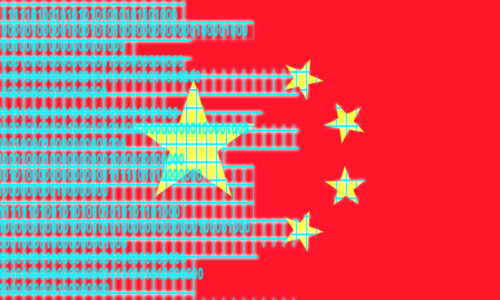The hidden costs of China’s ultra-convenient delivery services
Worker abuse, pollution, and a big squeeze on small business.

Food delivery and online retail in China are the hallmarks of convenience: the food arrives in minutes, the packages can be disposed of quickly and easily, and everything can be returned free of charge. But while middle-class consumers have it easy, others — including delivery riders, small vendors, and…the planet — are shouldering much of the burden.
Delivery riders are held to impossible standards of efficiency, incurring harsh punishments even for logistical snafus outside their control. In September, a detailed expose on the plight of delivery riders published in Rénwù (人物, “People”), a popular state-run magazine, concluded that riders were trapped in a “game that they have neither the time nor the ability to stop playing.”
Delivery companies use a point system to dock riders for missing a time window, a bad rating, or a bad review. Lose too many points and the punishment for one company is half a day’s worth of salary. Meanwhile, a survey has found that 70% of riders pinpointed the vendors, who prepare the food, as the cause of delays.
Strikes by delivery riders — approximately 3 million strong in the courier services alone — have increased four-fold in two years, going from 10 reported strikes in 2017 to 45 in 2019. On January 11, a rider set himself on fire to protest unpaid wages.
Researchers have linked traffic accident spikes in cities to ever-shrinking delivery speeds for riders. (The Renwu report details one rider who watched a fellow colleague get hit by a car, but was compelled to ride away upon hearing the “ding!” of a new order.)
Plastic waste — in the form of plastic bags, containers, and utensils — has surged in recent years due to the convenience of delivery, leading to a crisis in waste management.
China’s packaging waste has increased eight-fold in two years, going from 0.2 million metric tons in 2015 to 1.5 million in 2017. It is projected to reach 45 million tons by 2025, according to Greenpeace, equivalent to the total waste produced by Japan in a given year.
The Chinese government has issued a plan to curb the sale, use, and production of all non-biodegradable plastic by 2025. But without the cooperation of major online retail companies — Alibaba, JD.com, and Meituan — the plan is still empty bombast.
Waste management systems are not ready for the added influx. Though people in China produce less waste, on average, than people in the United States, roughly three-quarters of China’s plastic waste is already mismanaged, likely ending up in the ocean.
Small vendors are getting squeezed by governments, platform monopolies, and overindulgent customers.
Since the pandemic, many restaurants and shops have relied more heavily on online sales to stay afloat. Analysts say this is a blessing and a curse: while vendors have found new income streams, they have also become more vulnerable to the whims of major retailers (Alibaba and Tencent’s food delivery apps, Ele.me and Meituan, own 90% of the food delivery market). These platforms charge up to 20% of order revenues, possibly higher as competition rises, squeezing out restaurants with low profit margins.
The government’s plastic initiatives will likely hit vendors the hardest in the next few years, since they are the ones forced to seek alternatives. Many cannot afford to do so because of low profit margins and the costs they incur for dented or soiled deliveries.
Finally, as the cost of return orders vanish for buyers in the digital economy, some have gotten overindulgent. Vendors have taken to online forums to express their disdain for “dishonest” customers who “buy” expensive clothes only to return them, half-used, a week later.
China’s ecommerce industry will continue to burgeon, but the social and environmental costs of such a transition remain under-examined. The next few years will test whether the government can heed the warning signs, correcting for the unique burdens produced by the digital economy, or become distracted by sky-high ecommerce revenues.






